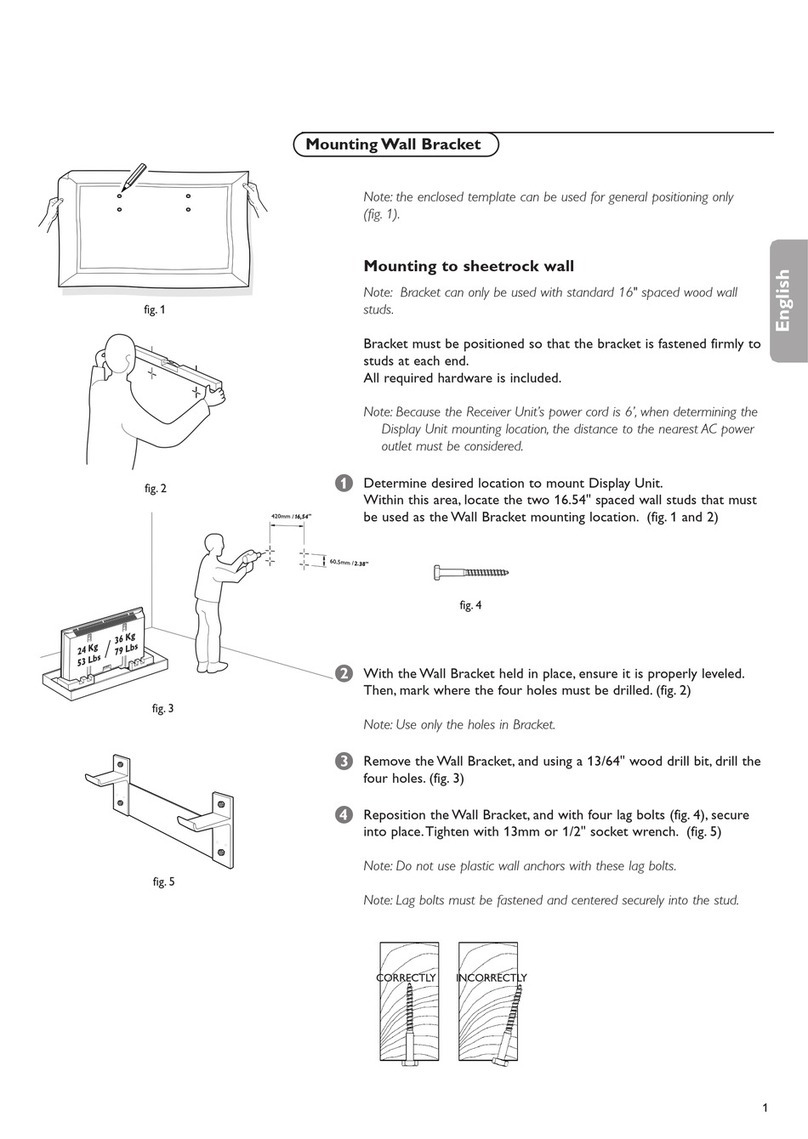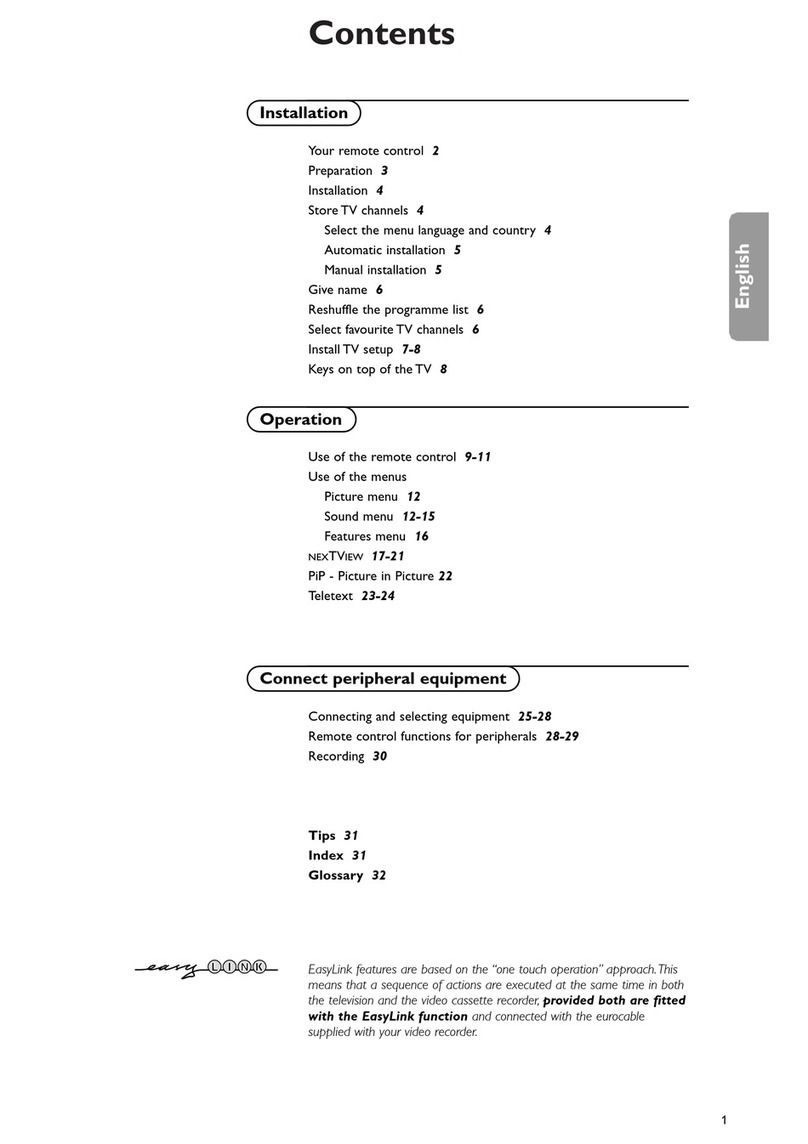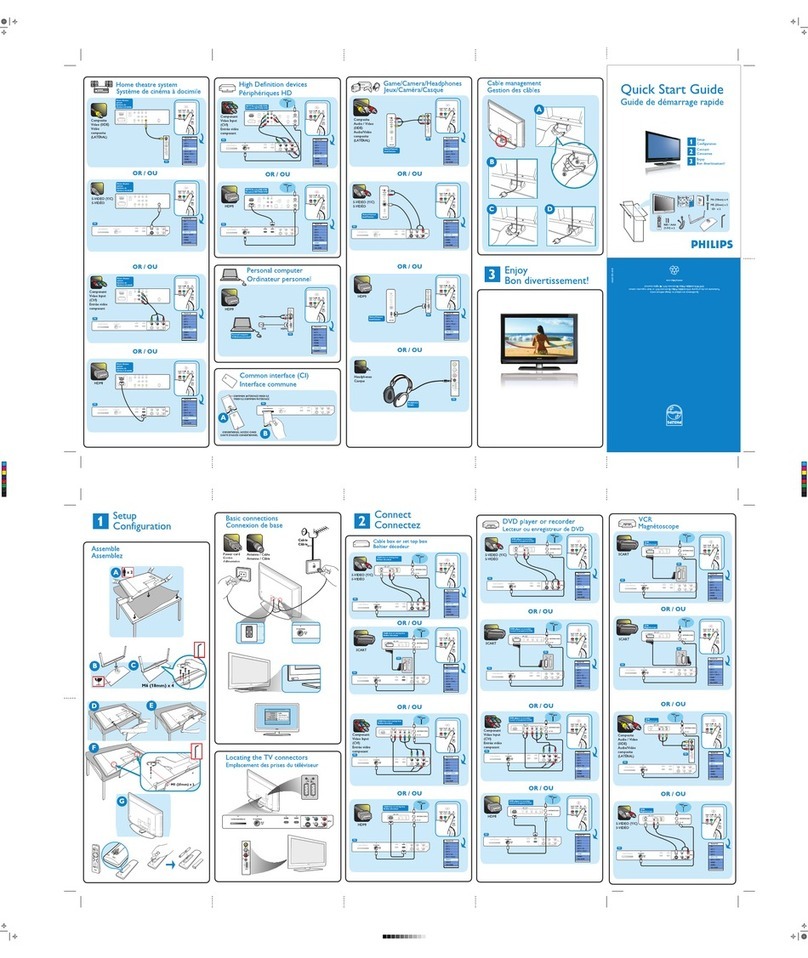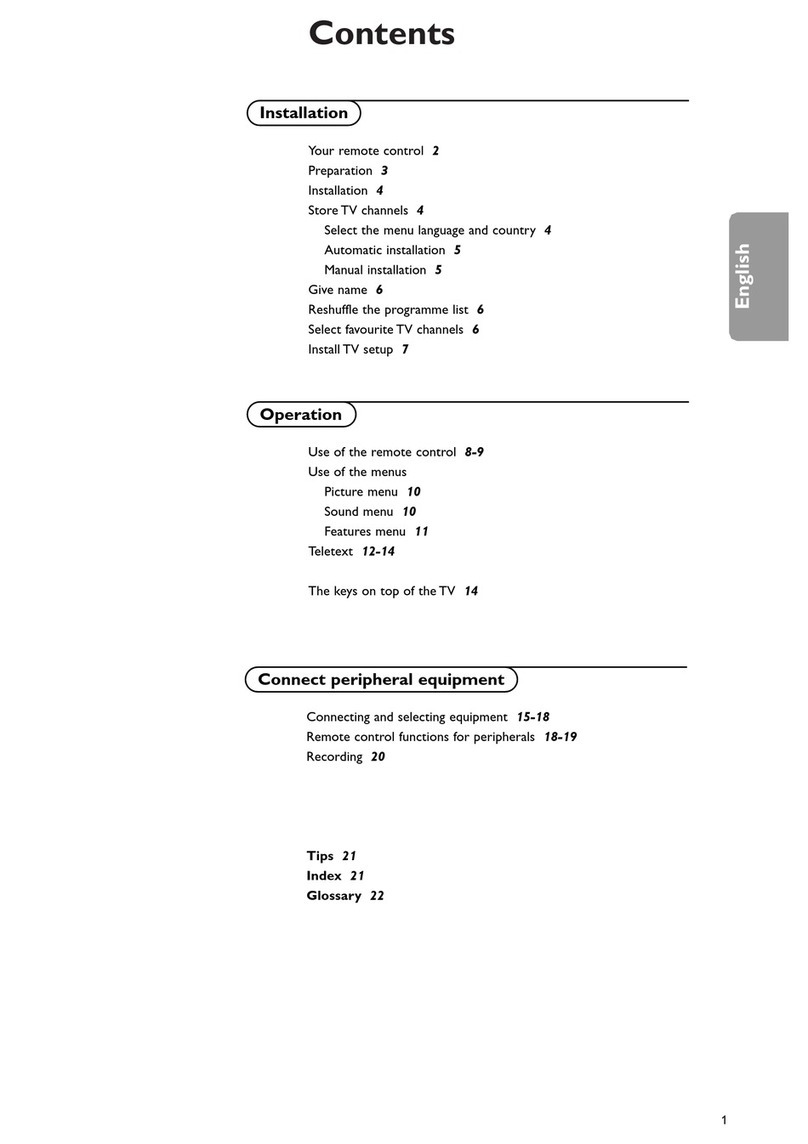10 3. Overall blockdiagram MG5.1E
Personal notes
There are eleven PC boards in the MG99 chassis. (Figure 3-1)
They are the Small Signal panel, Side Jack panel, Power
Supply panel, Interface panel, SVM module, Blue CRT panel,
Green CRT panel, Red CRT panel, High Voltage Scan panel,
and Convergence panel.
Whenever AC power is applied to the set and the Mains switch
is turned On, the Power Supply panel produces a 5 and a 15
volt standby supplies. When the set is turned On by the channel
up button on the Front Keyboard or the Remote Control, the
130 volt, 38 volt, -38 volt, 33 volt, 15 volt, -15 volt, -7.7 volt, 8.6
volt, and 5.2 volt supplies are switched On.
Frame and Line drive from the Small Signal panel is routed
through the Interface Panel to the Frame Drive and Line Drive
circuits on the High voltage Scan panel. The High Voltage scan
panel produces the High Voltage and Sync to the Convergence
panel. Focus voltage from the High Voltage circuit is fed to a
Focus/G2 block which provides Focus and G2 voltage to the
three CRT'S. During the Convergence adjustment mode, Red,
Green, Blue, and Fast Blanking from the Convergence Panel is
fed to the Small Signal panel to generate the adjustment grid.
The Small Signal panel selects video from the Antenna input,
one of the three Scart connectors, or the Side Jack panel. The
Small Signal panel outputs Red, Green, and Blue drive to the
CRT drive circuit located on the Interface Panel. The CRT drive
circuit then provides drive for the three CRT panels.
Left and Right channel audio from the Small Signal panel is
routed through the Interface Panel to the Audio Amplifier panel.
The Audio Amplifier panel has its own separate Switch Mode
power supply. The output of the Audio Amplifier is then fed to
the Speaker Switch panel which selects between the Audio
Amplifier or External Audio from a separate amplifier.
Luminance or Y from the Small Signal panel is fed to a Delay
circuit on the Interface panel before being applied to the SVM
panel. The Scan Velocity Module speeds up the beam during
light to dark transitions in the picture to provide a sharper
image.



















































